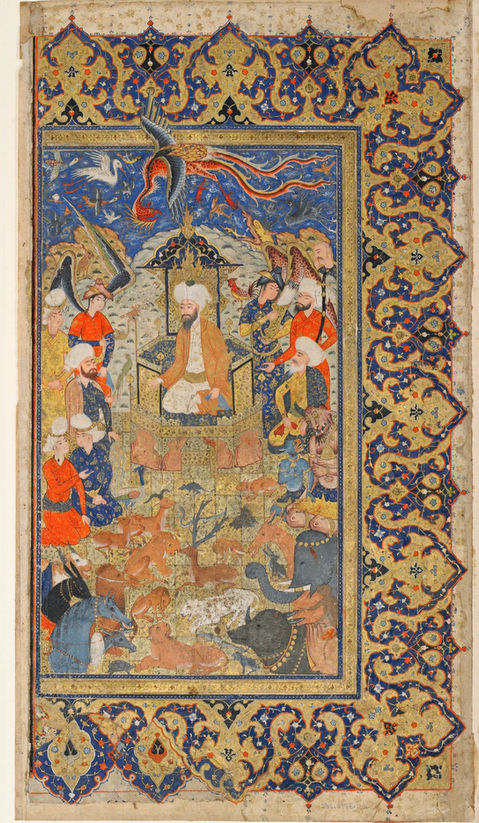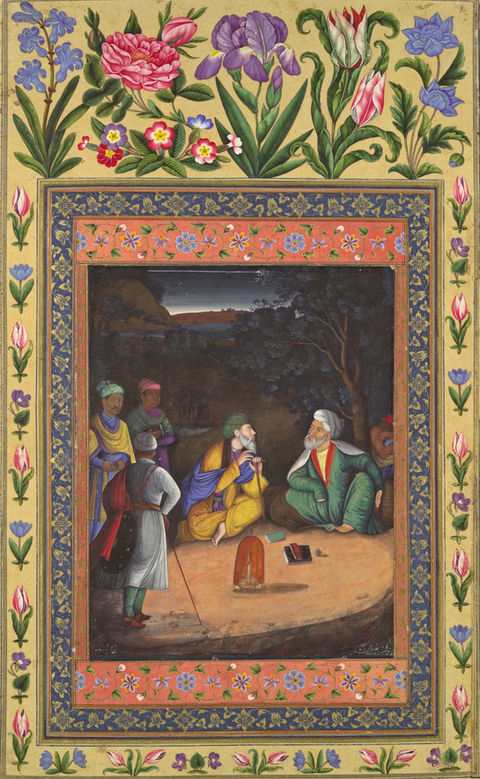The categorisations detailed below is not a clear-cut thematic formulations but rather arbitrary clustering based on a major theme, style, or works from an intimate circle of artists based within a specific atelier. Moreover, one theme or stye will come under a particular heading even though the same work might also be relevant in content to another. Hence, readers should throughly analyse most of the headings for finding a comprehensive background for their interests and research. The headings will be accompanied with references as academic monographs, articles, and entries provided in the Bibliographic Guide section and some of the referential details such as auction catalogues will be provided with images.
Artistic Heritage of the Ṣafavid Īrān
Portraits and Portrayals of the Ṣafavid Dynastic Lineage
Portrayals and depictions below are based on chronological succession of the Ṣafavid dynastic lineage, although starting from the founder of the Ṣafaviyya order, Ṣafī l-Dīn Isḥaq Ardabīlī (d. 935 h./1334).
Muġal Portraits and Portrayals of the Ṣafavid Dynastic Lineage and Courtly Figures
Ṣafavid Portraits of the Courtly, Mystic, Religious, and Scholarly Figures
Portraits of the European Figures or Individuals with European Dressing
Portraits with Animals
Portraits of Individuals in Sitting and Reclined Positions
Paintings of Prophets, Philosophers, and Mystics in Maǧālis al-ʿuššāq of Kamāl al-Dīn Ḥusayn Gāzargāhī (d. 909/1504)
Sulaymān and Bilqīs Frontispieces from the Šīrāzī Arts of the Book
Portrayals of Nakedness, Sexuality, Eros, and Eroticism
Farangī-sāzī Style of the Ṣafavid Artistic Heritage
Oil Paintings from the Ṣafavid Artistic Heritage
Paintings of Flora and Fauna
Porcelains (Local-made and Chinese) from the Ṣafavid court
This section presents the overwhelming influence of Chinese blue-and-white porcelain imports on Ṣafawid courtly and local pottery. The impact of Chinese goods became particularly predominant during the Mongol period, when the Īlḫānids ruled Īrān. Yet, another phase of artistic interaction began from around 1600 in which a new boost to the porcelain trade came from the founding of the Dutch and English East Indies companies. As such, large quantities of porcelain, on its way to Europe from the Far East in their ships, were off-loaded in the ports of Īrān. In response to this influx of Chinese porcelain, artisans of Īrān made great efforts to simulate it.
Tile Panels
This section includes a list of tile panels from the Ṣafawid dynasty. These tiles were majorly used to decorate palace walls as well as garden pavilions.


































































































































